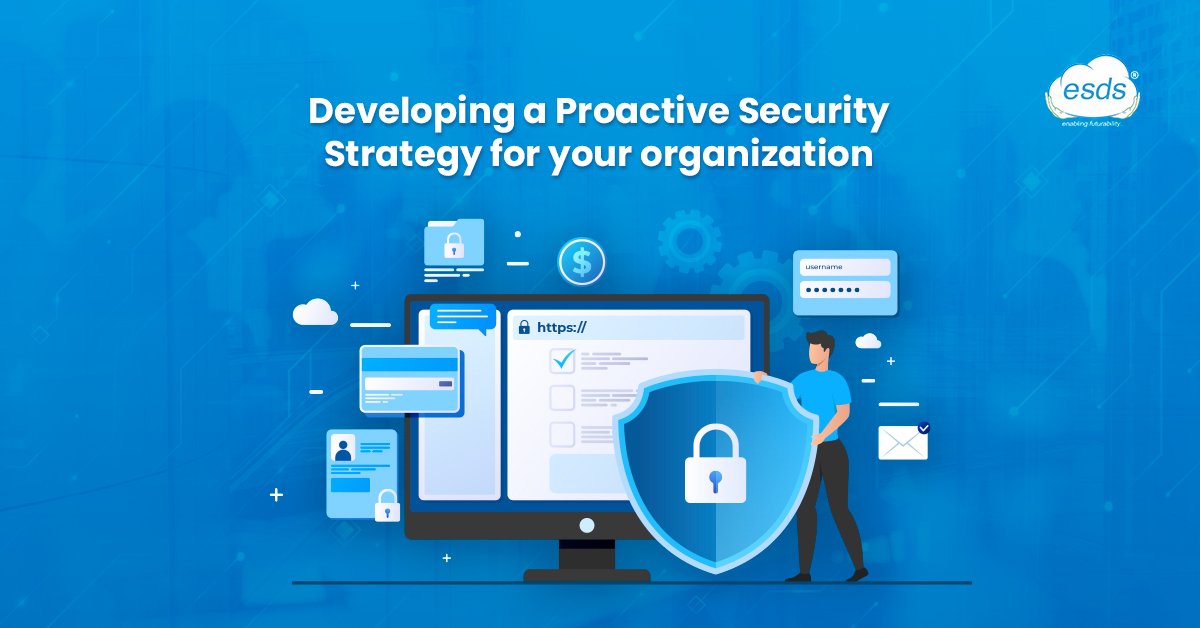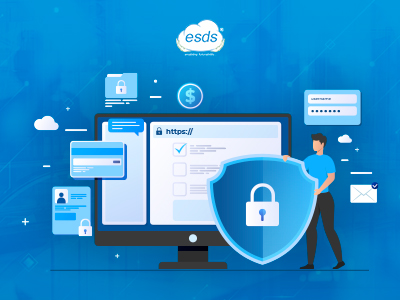Developing a Proactive Security Strategy for your organization
Cyber dangers continue to emerge at an alarming rate in today’s dynamic digital environment, endangering businesses of every size and in all sectors. Every day, there are more than 4,50,000 new malware samples alone, but researchers are also always finding new social engineering scams and zero-day vulnerabilities. It is no longer sufficient to respond to cyber threats reactively by patching vulnerabilities after attackers have exposed them to safeguard important digital assets. Instead, by implementing a proactive security policy, organizations must foresee dangers and respond to them before they materialize.

What Is a Proactive Security Strategy?
A proactive security strategy is an all-encompassing cybersecurity approach with the objective of identifying, foreseeing, and mitigating threats before they materialize into incidents. Due to their high profile and the extreme sensitivity of their data, large corporations and significant government organizations were the main practitioners of proactive security for a very long period. Smaller businesses could afford to take their time with cybersecurity because attackers didn’t give a damn about them.
Cyberattacks are no longer only directed at the most visible targets, though, as times have evolved. In 2021, 18% of SMBs faced six or more cyberattacks, while 60% of SMBs experienced one, according to the report The State of IT Security for SMBs in 2022-2023. Virtually every organization with internet-accessible IT infrastructure can anticipate being inundated with increasingly sophisticated attacks as a result of the rise of automated cyberattacks powered by artificial intelligence, and preventative measures won’t be able to offer a sufficient defense. Building a strong proactive security plan that is intended to stop both present and future cyber threats from generating data breaches and other mishaps is the best course of action.
The Primary Building Blocks of a Proactive Cybersecurity Strategy

An organization’s digital assets can be protected from cyber-attacks by using a proactive security strategy, which can be broken down into smaller building blocks.
Understanding of the Evolving Threat Landscape
It’s essential to stay up to date on new threats, attack techniques, and vulnerabilities if you want to be able to predict and be ready for attacks. Unfortunately, not all businesses employ or contract with the cybersecurity experts required to stay current with the constantly evolving threat landscape. They are therefore forced to resort to more expensive and ineffective reactive procedures because they are unable to change their security measures in a proactive manner.
Continuous Risk Assessment
Regular risk assessments can find areas of process and infrastructural vulnerability within an Organization. Organizations can prioritize resources and efforts to resolve vulnerabilities and reduce their vulnerability to cyber assaults by evaluating the likelihood and impact of prospective threats. When there are major changes to the organization’s infrastructure, technology, or business procedures, the risk assessment should be altered at least once a year.
Monitoring and Anomaly Detection
An important part of recognizing unexpected patterns or suspicious actions within a company’s network and systems is effective monitoring and anomaly detection. Organizations may respond to threats more rapidly when they are able to recognize early symptoms of a cyber-attack. This is crucial since independent hackers only need 9.5 hours to get unauthorized access to a target network if they are not found and stopped.
Active Threat Hunting
Active threat hunting, which makes use of the knowledge and intuition of qualified cybersecurity specialists, goes beyond passive monitoring. These threat hunters identify vulnerabilities before hackers can so that Organizations may proactively address them.
Timely Patch Management
Because unpatched vulnerabilities are involved in over 60% of data breaches, it is crucial to keep software and systems up to date with the most recent security fixes. Every device connected to the organization’s network, including servers, workstations, smartphones, tablets, wearables, and IoT devices, should have patches installed as soon as they are made available.
Incident Response Planning and Testing
The roles, duties, and processes to be followed in the occurrence of a security breach or cyber-attack are established by a well-defined incident response plan. It guarantees that a company is ready to respond promptly and effectively to an incident in order to contain it, lessen its effects, and resume operations as soon as possible. Incident response strategies must be put to the test using tabletop exercises and simulated cyberattacks in order to ensure their effectiveness.
Cybersecurity Awareness Training
Employees can become a powerful first line of defense by receiving regular training in cybersecurity awareness. Employees are typically the vulnerable link in the cybersecurity chain. In particular, social engineering assaults like phishing, spear-phishing, and business email compromise (BEC) should be covered in this training. Employees should also be informed on corporate policies, security best practices, and potential hazards they may run across at work.
Conclusion: It’s Time to Embrace Proactive Security
Organizations of all sizes must now more than ever establish a proactive security policy by putting the key components mentioned above into practice. Those that continue to rely on reactive measures would find it difficult to stay on top of the various and serious dangers. The good news is that proactive security adoption doesn’t have to be a challenging, expensive, and time-consuming procedure. It may be made a worry-free experience that won’t detract from the primary business goal of a managed IT service provider like ESDS. For more information on how we can assist your company in developing a proactive cybersecurity plan that is suited to your particular needs, get in touch with us right away.
- Why does your business need Endpoint Detection and Response (EDR)? - May 15, 2024
- Are your business endpoints completely secure? - March 26, 2024
- Is Colocation key to transforming your data center management strategy? - March 22, 2024
